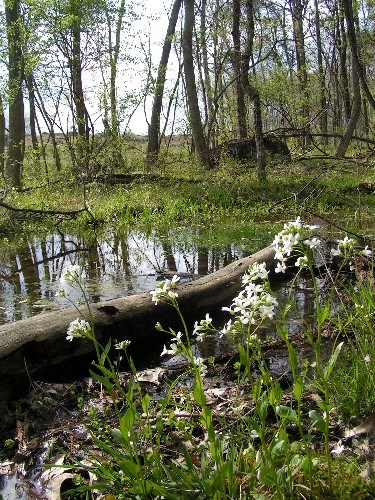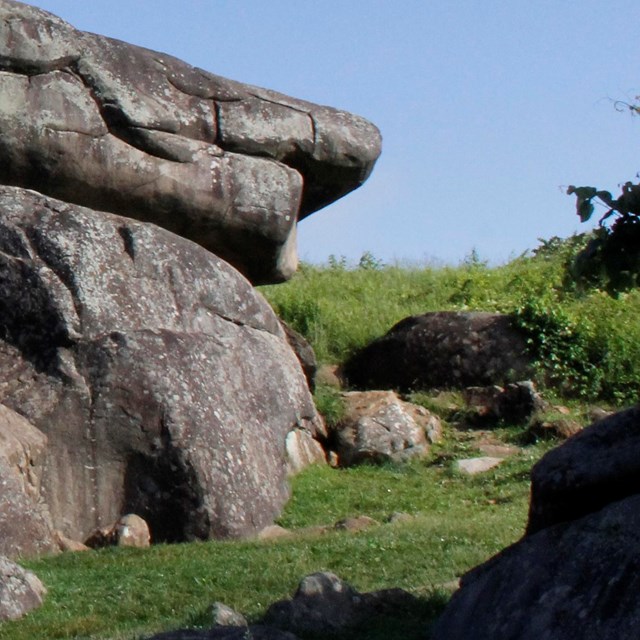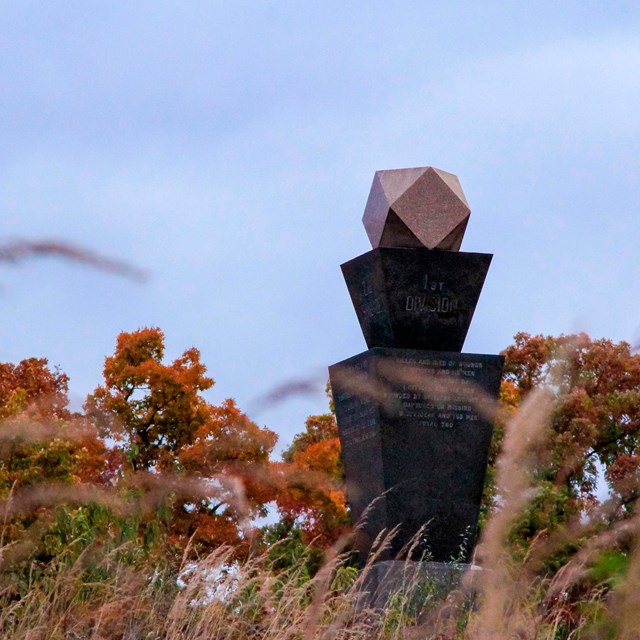National Parks are widely recognized for their inspiring scenery. At Gettysburg National Military Park the visitor is offered a step back in time to 1863. A walk down a historic lane or park avenue invites the visitor to reflect on the events that occurred here and reflect on events that are occurring in their present day lives. The park’s 5,989 acres provide opportunities for both naturalist and historian to learn and reflect upon the various components of the cultural landscape.
Gettysburg National Military Park comprises a mosaic of pastoral landscapes and forested knolls, with pockets of dispersed wetland and intermittent streams. Over 2,300 acres of the park’s landscape are planted in crops, pasture, or meadows providing the visitor with a glimpse of the local agrarian lifestyle. Over 1,600 acres of woodlots and forested habitat comprise several successional communities, from mature oak/hickory to early scrub-shrub. Wetlands dot the landscape roughly totaling 148 acres of palustrine wetland and over 26 miles of associated riparian habitat.
The natural landscape offers a respite to the ever increasingly busy schedule of the modern day visitor. The historic landscape is interwoven into the fabric of existing natural features, such as woodlots, wetlands and geology. These features provide visual stimulation as well as academic stimulation. Ongoing studies to understand forest regeneration in woodlots at Gettysburg has been a continuing study since 1985. Wetlands and their functional values in terms of ecological niches and filters have been important factors in rethinking the agricultural special use program. Granite rock outcroppings at Devil's Den are recognized for more than strategic positions; they are records of processes that have occurred throughout the earth's natural history.
In 1999, the Gettysburg National Military Park GMP/EIS was approved, outlining goals for rehabilitating the1863 features that impacted the battle. Components of the plan included replanting missing historic woodlots, orchards and thickets and removal of non-historic vegetation. These landscape changes were designed and proposed to aid interpretation of the battle story. In addition, the methods of landscape change where thoughtfully considered to create the least amount of impact, in context with park objectives, on species known to use the park.



